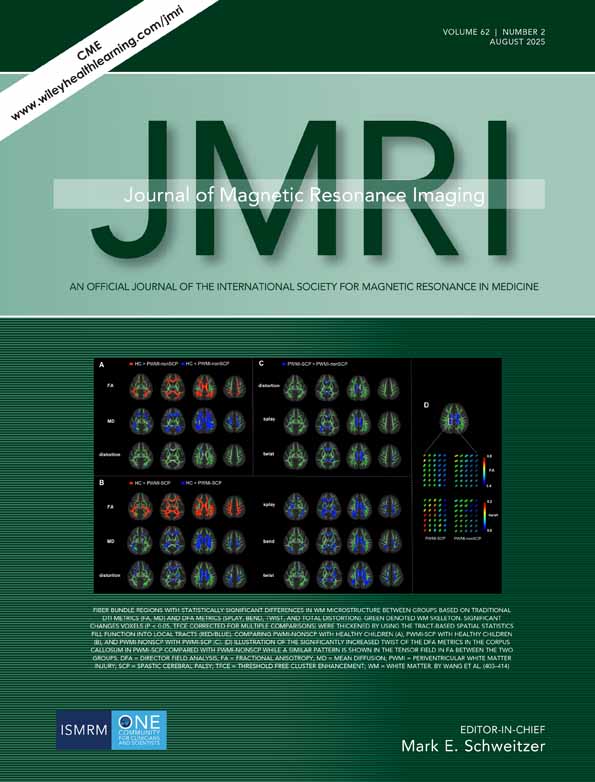Biopsy needle tip artifact in MR-guided neurosurgery
Abstract
A thorough understanding of both the appearance and origin of metallic biopsy needle tip artifact in magnetic resonance imaging (MRI) as well as its interaction with various magnetic resonance (MR) sequence parameters is beneficial for its application in today's MR-guided therapeutic procedures. In a more practical setting, this investigation has focused on the characteristics of MR image artifacts associated with a finite-length metallic needle, specifically at the tip of a biopsy needle when it is approximately parallel to the main magnetic field. The image artifact at needle tip, which exhibits as a blooming ball-shaped signal void, was demonstrated and studied using MR imaging and numerical simulation employing the finite difference method (FDM). In order to understand the origin of this image artifact, a numerical model or simulation software based on the FDM has been developed specifically to solve for the field disturbance to a uniform magnetic field due to a finite-length metallic needle. The solution for magnetic field shows that the field disturbance is spatially localized at the needle tip. From the numerical results, simulated images were generated which were in a very satisfactory agreement MR imaging experiment. Results showed that the MR image artifacts associated with MR-compatible metallic biopsy needles are not only present due to the magnetic susceptibility difference between the needle and its surrounding tissue, but also predictable in routine MR-guided procedures, and the size of the image artifacts could be reduced if optimal imaging parameters were used. J. Magn. Reson. Imaging 2001;13:16–22. © 2001 Wiley-Liss, Inc.




